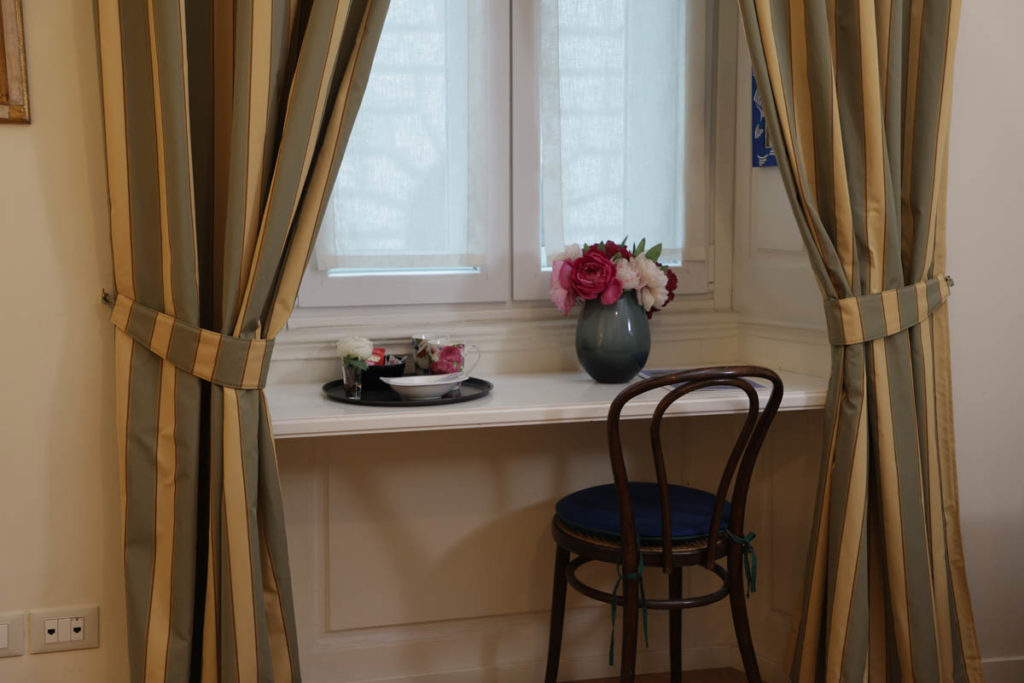All rooms come with:
- en-suite bathroom
- digital terrestrial television and access to Sky
- WI-FI access
- kettle (with instant coffee and wide range of teas and herbal infusions)
- minibar with bottles of water
- air-conditioning
- hairdryer
- daily housekeeping
Le 6 A
A tribute to Italo Svevo
The name “Le 6 A” is a tribute to Italo Svevo, whom Eugenio Montale defined as “a piece of Trieste”. The name is also a tribute to Trieste, the city-character, the secret matrix of events and situations, a city of trade but also a city of souls. A symbol city, like Kafka’s Prague and Joyce’s Dublin. Bearing the names of the women characters created by Svevo, “Le 6 A” is then a tribute to the women of Trieste, whom are traditionally held as being beautiful, free, committed and strong.
Annetta
After seducing her, Alfonso will abandon and leave Annetta to decide about her destiny.
Italo Svevo introduces her with these words:

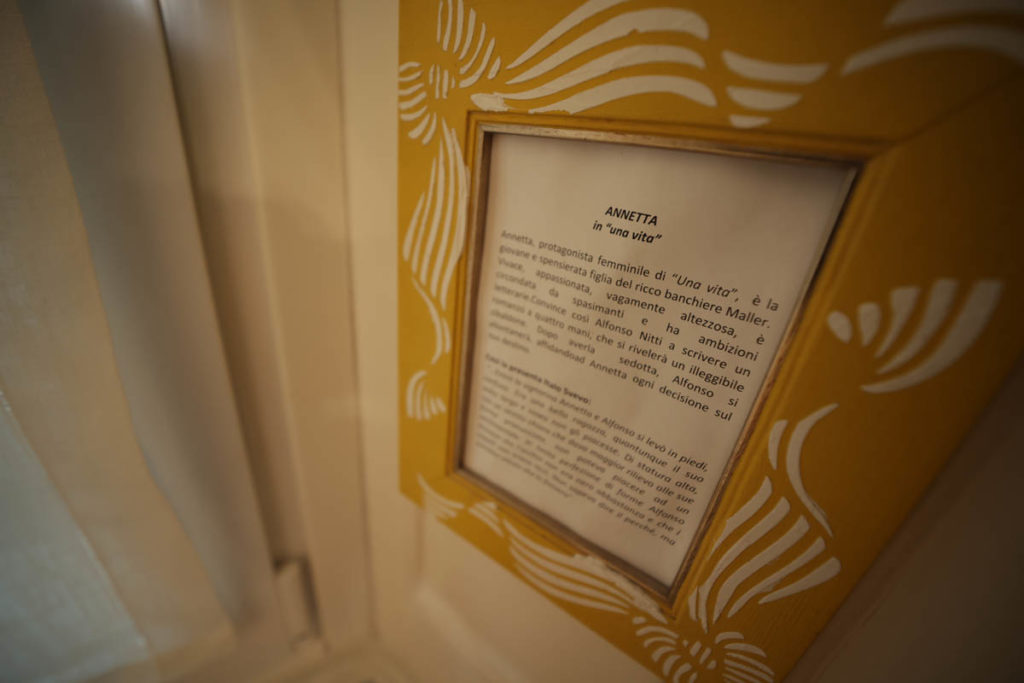



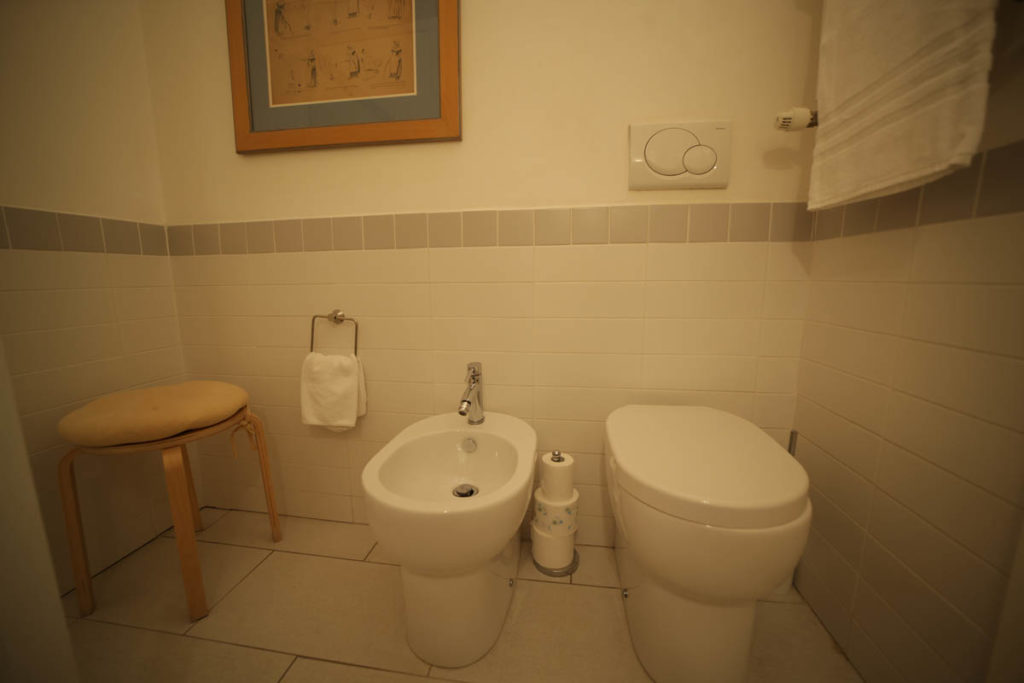




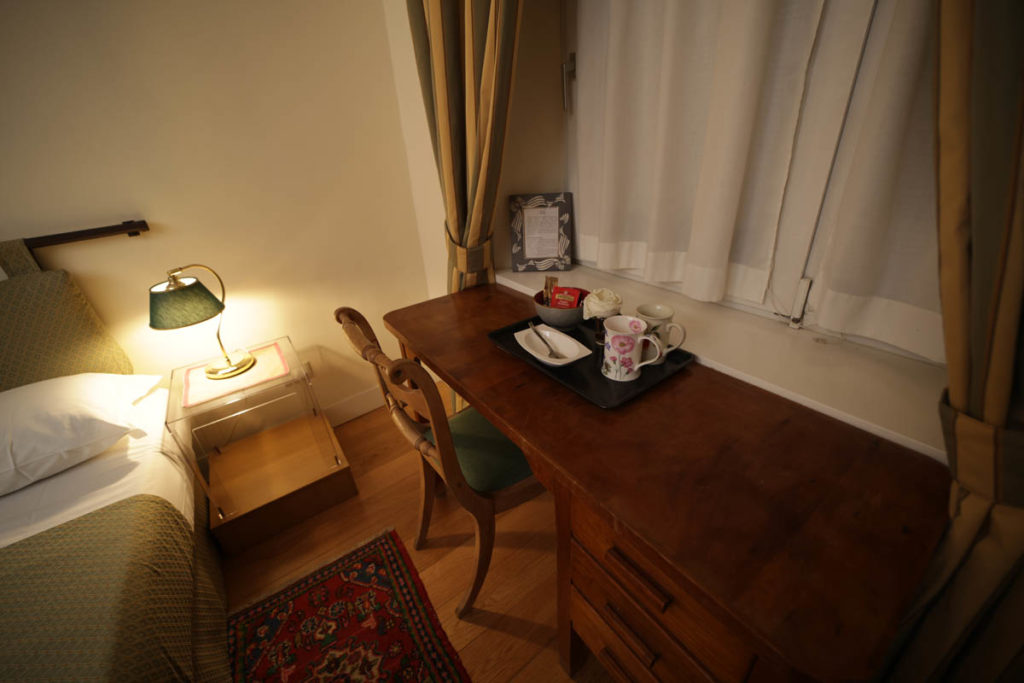





A caring and considerate woman, she lives a secluded life. She represents middle-class propriety and honorability and illustrates the feminine model of the time: a woman devoted to her family and to the comfort of her man.
Resigned to live a dull life with her brother, Amalia has never considered love, but when she sees Emilio in love, she starts dreaming and nurturing the “crazy hope” to be fancied by sculptor Stefano Balli, a frequent visitor to her house. And she suffers in silence, haunted by nightly raptures.
Italo Svevo introduces her with these words:
Mrs. Amalia had never been beautiful; tall, skinny, colourless … of a girl she only retained the hands, white and slender, beautifully shaped, to which she devoted all her care.
but then he falls madly in love with the girl, who will give him the only Carnival out of his life of eternal Lent.
Free, sensual and full of life, genuine and naïve, fickle and elusive, Angiolina is a force of nature, wild and untamed. She is fire. Her exuberant sexuality will come into clash with the middle-class conventions of the late 20th century Trieste.
Italo Svevo introduces her with these words:
Evidently she had in her eye, for any smart man passing by her, some kind of greeting; her eye would not watch, but a flash of light sparkled in it. In her pupil something moved and constantly altered the deepness and direction of light. That eye popped!









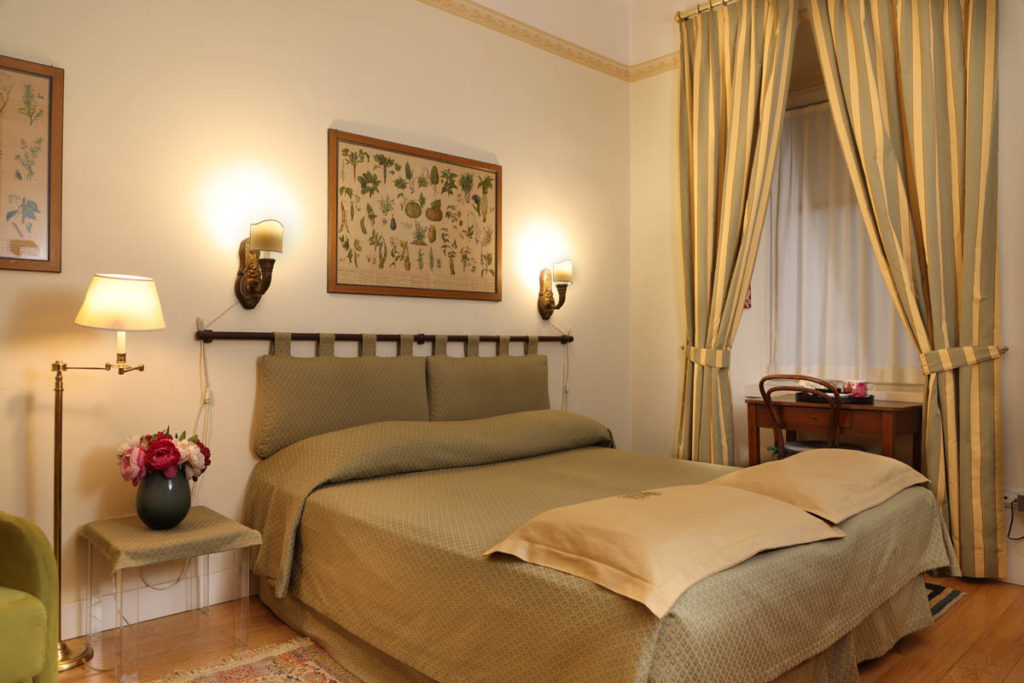







Here is how Ada is first introduced, when she enters the room with one of her sisters:
That first time, I looked at Ada with one wish: to fall in love with her, because you had to get through that to marry her.
A reference for her mother and sisters, Alberta welcomes enthusiastically the news about Augusta’s engagement to Zeno and declares she will be a good sister to him. However, Alberta too will change her mind and eventually get married.
Italo Svevo introduces her with these words:
I watched her! She looked like Ada! A bit smaller than her, she held in her body the marks of childhood, not faded yet. She would frequently raise her voice and she often laughed excessively, which turned her face contracted and red.












